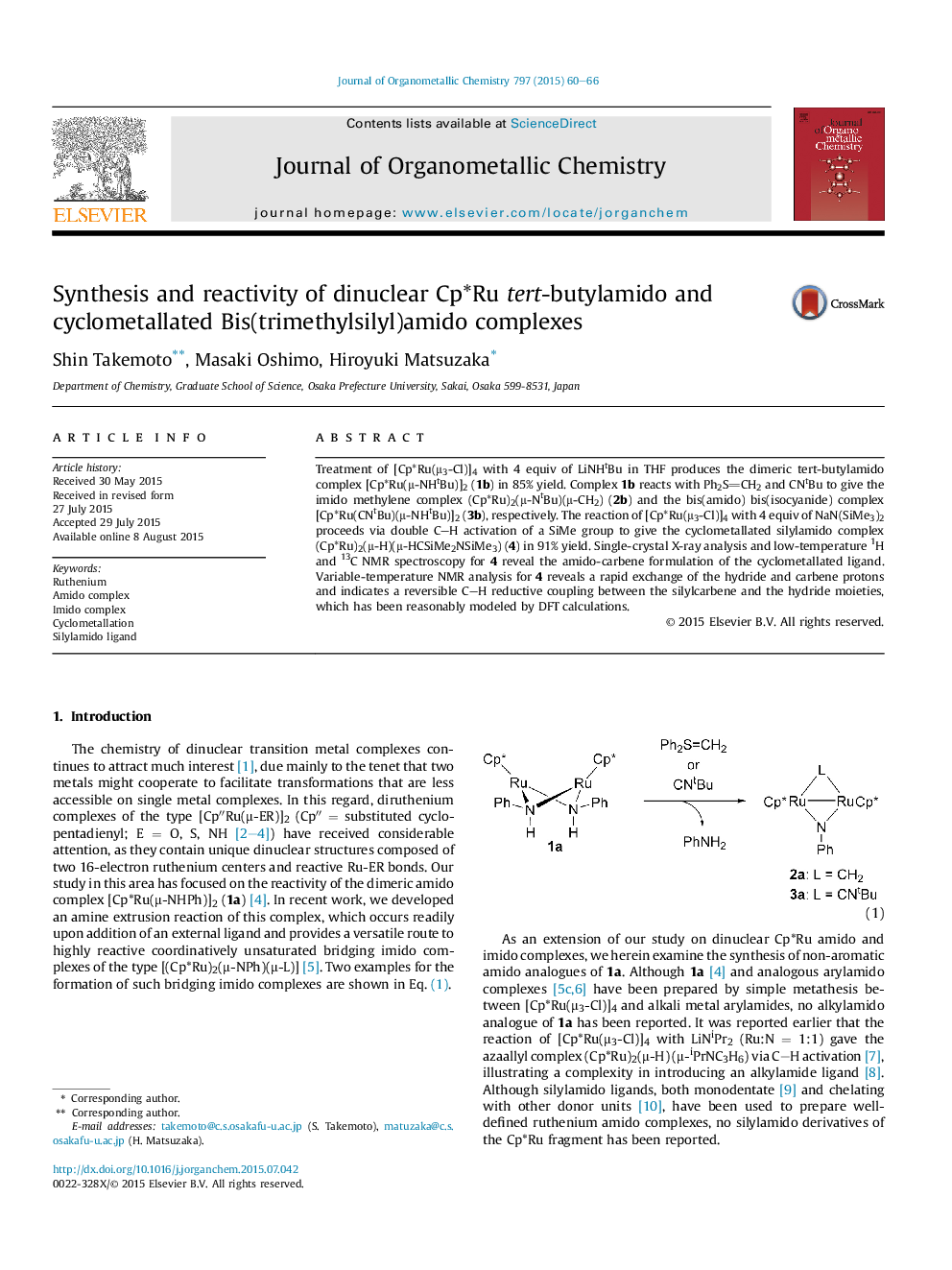| Article ID | Journal | Published Year | Pages | File Type |
|---|---|---|---|---|
| 1321891 | Journal of Organometallic Chemistry | 2015 | 7 Pages |
•Reactions of [Cp*Ru(μ3-Cl)]4 with LiNHtBu and NaN(SiMe3)2.•Synthesis of dinuclear amido, imido, and cyclometallated silyamido complexes.•Reversible C–H reductive coupling in the cyclometallated complex.
Treatment of [Cp*Ru(μ3-Cl)]4 with 4 equiv of LiNHtBu in THF produces the dimeric tert-butylamido complex [Cp*Ru(μ-NHtBu)]2 (1b) in 85% yield. Complex 1b reacts with Ph2SCH2 and CNtBu to give the imido methylene complex (Cp*Ru)2(μ-NtBu)(μ-CH2) (2b) and the bis(amido) bis(isocyanide) complex [Cp*Ru(CNtBu)(μ-NHtBu)]2 (3b), respectively. The reaction of [Cp*Ru(μ3-Cl)]4 with 4 equiv of NaN(SiMe3)2 proceeds via double C–H activation of a SiMe group to give the cyclometallated silylamido complex (Cp*Ru)2(μ-H)(μ-HCSiMe2NSiMe3) (4) in 91% yield. Single-crystal X-ray analysis and low-temperature 1H and 13C NMR spectroscopy for 4 reveal the amido-carbene formulation of the cyclometallated ligand. Variable-temperature NMR analysis for 4 reveals a rapid exchange of the hydride and carbene protons and indicates a reversible C–H reductive coupling between the silylcarbene and the hydride moieties, which has been reasonably modeled by DFT calculations.
Graphical abstractFigure optionsDownload full-size imageDownload as PowerPoint slide
